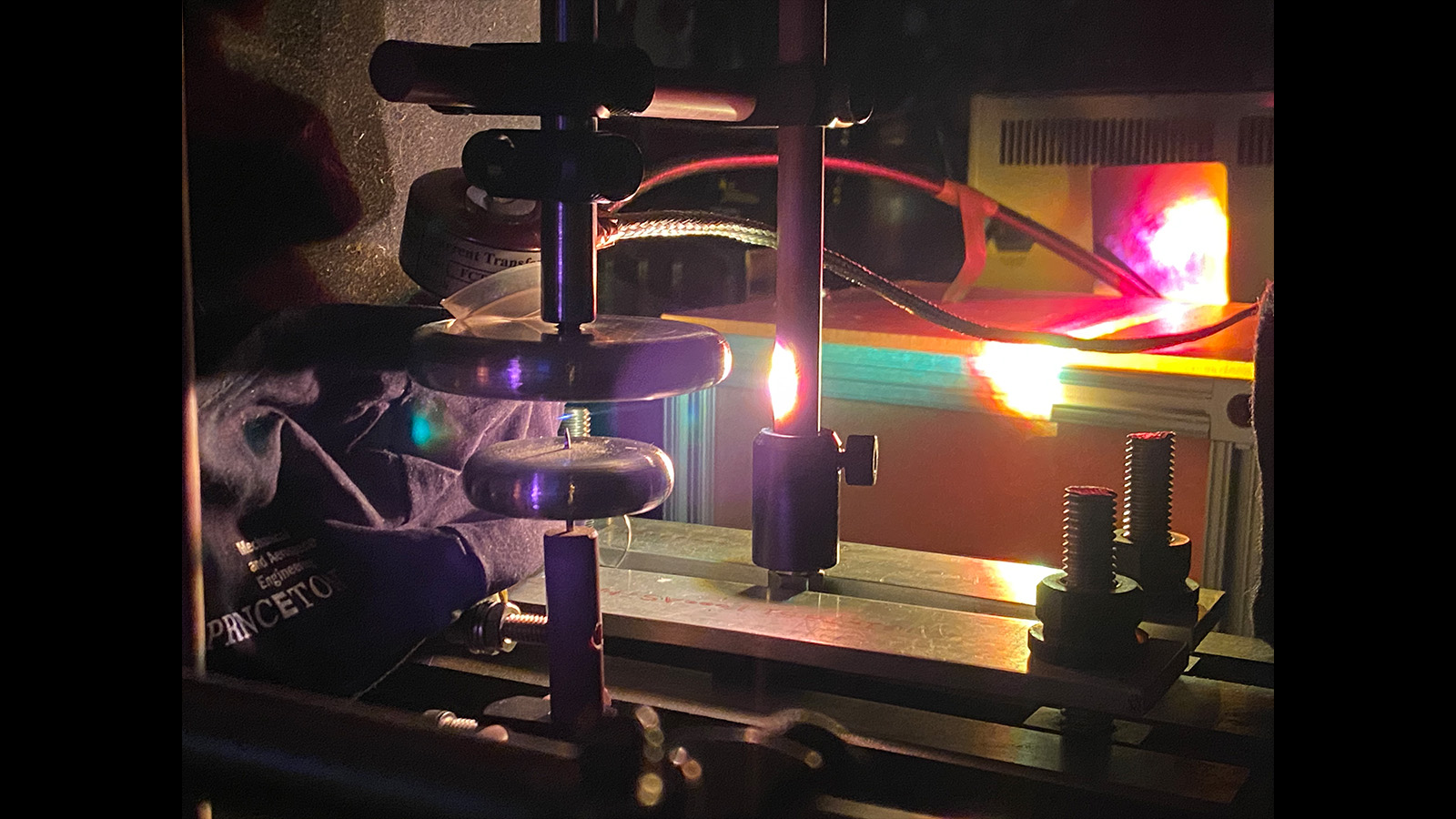Stay Up to Date
Submit your email address to receive the latest industry and Aerospace America news.
The Plasmadynamics and Lasers Technical Committee works to apply the physical properties and dynamic behavior of plasmas to aeronautics, astronautics and energy.
The U.S. Department of Energy-funded Princeton Collaborative Low Temperature Plasma Research Facility selected 21 projects in January to facilitate collaborations among scientists across the country. In April, researchers at the PCRF used a Femtosecond Two-Photon Absorption Laser Induced Fluorescence diagnostic system to image and monitor neutral atomic hydrogen densities in conditions relevant for fusion and Hall thrusters for the first time, with accuracy better than 10 billion atoms per centimeter cube.
The year brought several advancements related to streamer discharges, one of the most important processes encountered in nonthermal plasmas. In January, researchers at Princeton University and the Moscow Institute of Physics and Technology demonstrated pulsed generation of a beam of runaway electrons by a decelerating positive streamer, with possible implications in the X-ray radiation detected from various kilometer-long discharges (blue jets, red sprites) in the upper atmosphere. In May, researchers at Princeton University demonstrated self-focusing of a streamer in an external longitudinal magnetic field. In July, researchers from Princeton University, the University of Notre Dame and the Massachusetts Institute of Technology used the electric-field-induced second harmonic generation method to perform direct measurements of the electric fields inside streamer coronae.
Chemical kinetics researchers continued to advance in the quest for predictive understanding of plasma-assisted methods for combustion, catalysis, fuel reforming and carbon dioxide remediation. In June, researchers at Ohio State University developed a hybrid nonequilibrium plasma-generation method, combining high-voltage nanosecond discharges and sub-breakdown radio frequency voltage, applying it to control energy pathways and provide chemical selectivity of products. In July, researchers at Princeton University, in collaboration with the Moscow Institute of Physics and Technology, identified a new mechanism, based on positive hydrocarbon-water cluster ions, that controls the plasma recombination in hydrocarbon-air mixtures at temperatures below 1,000 kelvins. In August, Princeton University researchers achieved validation of kinetic models for plasma-assisted fuel pyrolysis and oxidation of n-alkanes through direct measurement of reaction rates and branching ratios of the singlet oxygen using mid-infrared laser absorption, integrated cavity output spectroscopy and faraday rotational spectroscopy. In September, researchers at Bochum University developed advanced laser diagnostics to measure carbon dioxide rotational-vibrational excitation, which is important for developing detailed kinetic models of carbon dioxide dissociation.
Hypersonics research was on the rise this year following the establishment of the U.S. Department of Defense’s University Consortium for Applied Hypersonics. In January, Ohio State University researchers demonstrated that both cavity ring down spectroscopy and tunable diode laser absorption spectroscopy can be applied to measure the concentration of metastable excited molecular nitrogen N2(A3Su+) in nonequilibrium supersonic air flows at high-enthalpy pulsed test facilities. In March, New Jersey-based Speckodyne Corp. and Plasma-Tec Inc. implemented the femtosecond laser electronic excitation tagging technique for the first time in high enthalpy hypersonic flows at the University of Texas Arlington Aerodynamics Research Center arc-jet facility, providing kilohertz-rate imaging of velocity profiles. In April, researchers at the University of Arizona succeeded in incorporating the plasma sheath into numerical simulations of a Mach 10 flow. Researchers at the University of Notre Dame demonstrated an alternating-current-driven glow discharge sensor for measuring velocity in rarefied, high-speed flows and examined the effects of gas composition, pressure and plasma discharge frequency on the sensitivity.
Researchers also made progress in demonstrating plasma technologies for next-generation engines and combustors. In January, researchers at CentraleSupélec in France achieved agreement between experiments and simulations of stabilization of lean hydrocarbon flames by pulsed nanosecond discharge plasmas. They modeled the fully turbulent flame using large-eddy simulation techniques and developed a phenomenological reduced-order model for the plasma. In March, researchers at Georgia Tech and the U.S. Air Force Research Laboratory demonstrated for the first time plasma-stabilization and nitrogen oxides emissions reduction in ammonia-fueled flames.
Contributors: Igor Adamovich, Arthur Dogariu, Christophe Laux, Stefan Löhle, Eric Matlis, Richard Miles, Bernard Parent, Suo Yang, Wu Yun and Joseph W. Zimmerman
Stay Up to Date
Submit your email address to receive the latest industry and Aerospace America news.




